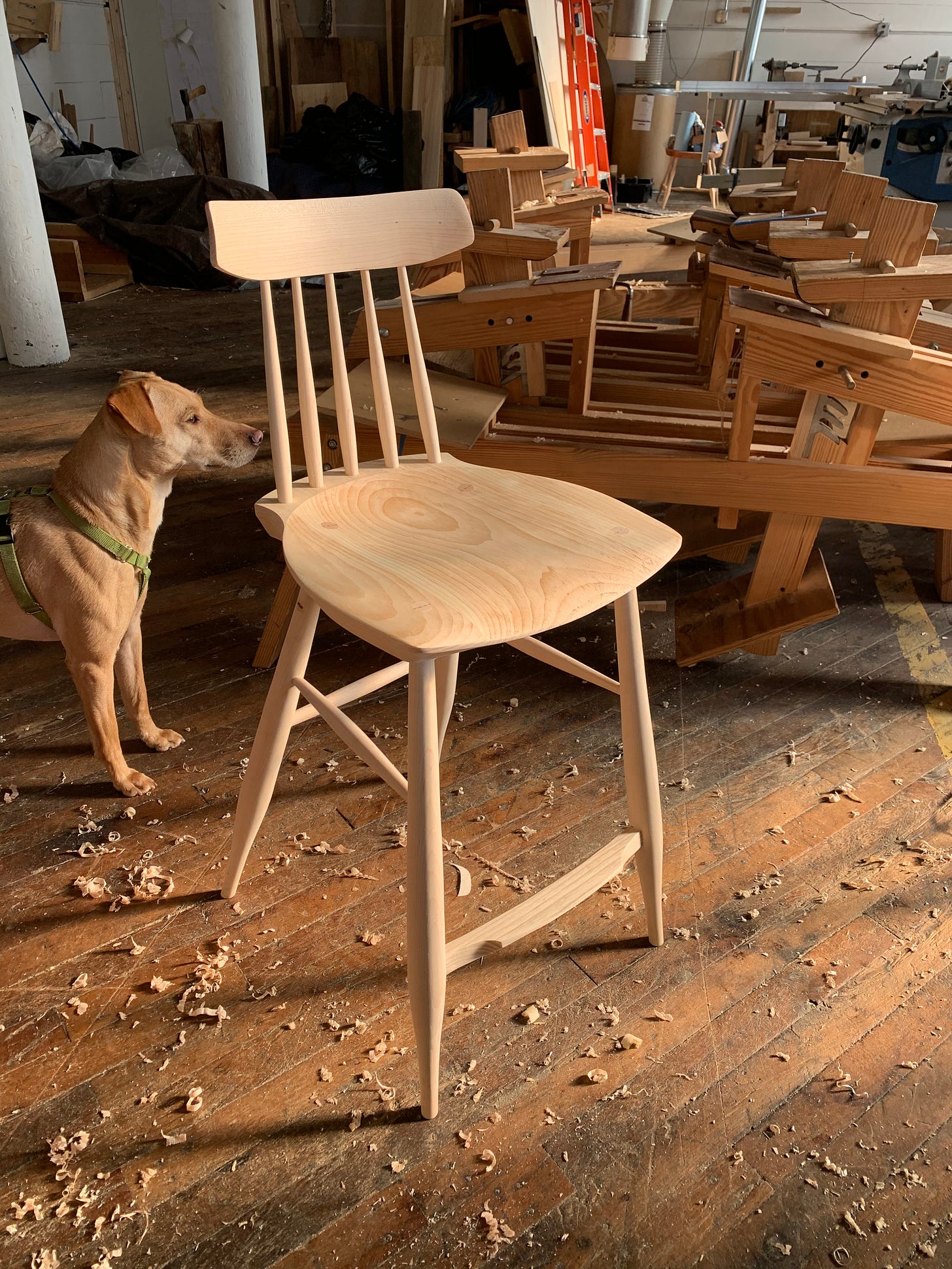Today is day one of a Temple Chair class. Folks often ask about the name of this chair. First of all, I hate naming chairs, it doesn’t come naturally to me and mostly seems like a cheesy marketing tool. In this case though, it did come easily. I’m a huge fan of Akira Kurosawa films, especially those set in feudal Japan. I can watch them over and over, largely for the architecture. This chair was inspired by some of the shaping that I admired in the temples I saw in these films, as well as in some of my favorite Chinese films. The original design was even more reminiscent of some of the shaping and stature.
The design was also heavily influenced by the Eames bent plywood chairs, but there isn’t enough money in the world to make me spend my days gluing up plywood, so carving it is.
When classes commence, there’s lots to convey. Most information comes over time, but the important stuff, like “where’s the bathroom” and “can I eat those snacks” gets covered first. After introductions and the instructions about not looking at Georgia, I like to give a preview of the class tasks so folks know what to expect. No matter what I say, I can’t truly prepare the students because a chair class is like trying to sip from a fire hose. Chair making isn’t a single event, it’s a decathlon. Each task uses different tools, understanding and skills. Just when you get the hang of one task, it’s time to move on to another that has absolutely nothing to do with what you’ve already learned. Don’t get me wrong, it’s the most humane way that I’ve ever worked wood. By humane, I mean to say that the tyranny of 90 degrees holds little sway in chair making. Most of the time is spent happily working in all the other available degrees, with little pressure to be too specific. Yes, it’s good to be accurate, but all the processes have some play and being a bit off here and there will never ridicule you like trying for 90 degrees and failing. Maybe I’m projecting, or revealing my weakness in cabinetry, but I know my comfort zone, and there are plenty of folks making solid square work to relieve any pressure I feel to join in.
But for most trained in flat woodworking, it can be a tough transition. I recall Dave Sawyer admonishing me “it’s just a chair”, “you’re too much of a cabinet maker” etc…
So I’ve always included this in my talk preparing students for the class.
“If you’re someone who has to do everything perfect to move forward, you can give it up…or we can break you of it, either way, it’s going to happen”
Slight discrepancies wash out in the process instead of telescoping through out it. But letting go of the world of square and flat is to abandon clear metrics of success or failure for a whole other view. Besides my own, I’ve seen this transition hundreds of times. The dissolving of engineered certainty can be a sort of trauma in and of itself. Clarity often only comes at the very end, where a bunch of mistakes, missteps and imperfect parts add up to a more wonderful result than you thought possible. I feel honored that my students trust me to shepherd them through this.
So here we go, day one is over and everyone has done imperfect work, including me, but I know how much pleasure the process and results will deliver, which fuels me enough for a long week of exertion. I’ll keep you posted.




The world of chairs is very different. No real straight or square place to start or reference to. In a way sort of functional sculpture. But the challenge is worth it. And can be addictive.
Having a great instructor to lead you through this process is a gift. You can muddle through and learn some on your own, albeit slowly. Or you can put up with a teacher who is only teaching because they have to.
Learning from Pete is an amazing experience. The pace is good, atmosphere laid back and not threatening. And he is a wealth of knowledge on everything from grinding and using drill bits to explaining complex layouts and drilling angles.
Mostly you get the feeling he wants to be teaching you. I know he has to pay bills like we all do, and teaching is part of that. And he’d probably rather be creating a new design. Still, he seems to enjoy sharing the process with others. Experiencing the joy of their success and “ah-ha” moments. And the experience level of the students is truly all over the place. Pete seems to deliver what each student needs.
I began my career in education as a shop teacher before going into administration. I’ve made a lot of furniture and other things over the years. I believe the classes I’ve taken with Pete are perhaps the most enjoyable, if not challenging and rewarding woodworking experiences I’ve had
Day One was brilliant! So good to be back in the classroom with you and Karen! Already, I think our group is already bonding. On to Day Two!